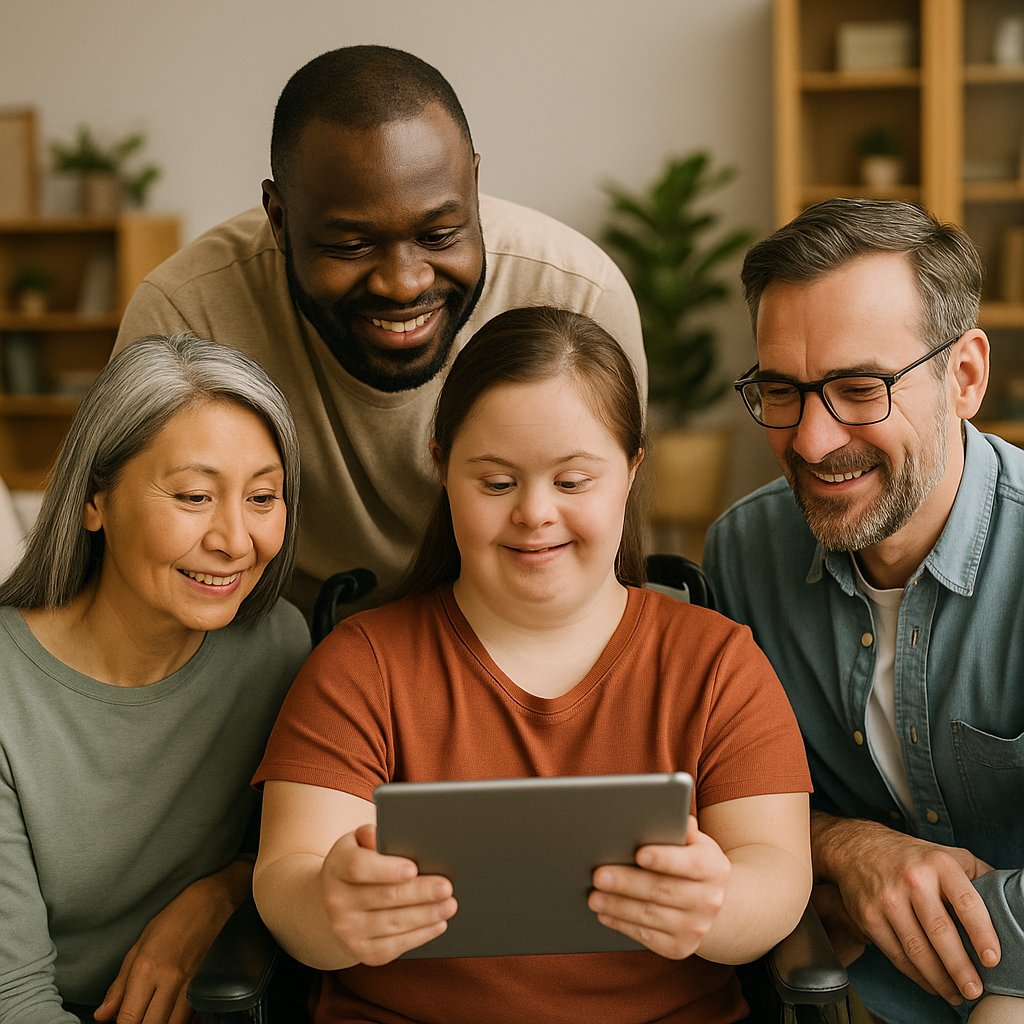
Technology is reshaping how Australians live, connect, and care for one another — and the disability sector is no exception. With digital tools becoming more accessible, service providers are finding new ways to bridge the gap between independence and support. Total Care Disability Services stands at the forefront of this shift, combining compassionate care with technology-driven engagement to foster stronger community inclusion for people with disability.
The Rise of Digital Wellness in Disability Support
Digital wellness refers to how individuals use technology to maintain a balanced, healthy life. In the context of disability services, it means empowering participants to engage safely and confidently in the digital world. From accessible apps to remote check-ins, technology now supports everything from healthcare to education and social participation.
Yet, access isn’t universal. Many individuals living with disability face challenges such as affordability, limited connectivity, and a lack of adaptive tools. This is where innovative support organisations like Total Care Disability Services are changing the landscape. By promoting accessible technologies and digital literacy, they’re helping participants navigate online spaces with confidence — reducing isolation and creating new opportunities for social connection.
For instance, virtual wellness programs and telehealth have made support more consistent, especially for regional participants. These innovations not only improve convenience but also help individuals maintain independence without losing the human touch.
(Read more about the positive intersection of technology and wellbeing on DownGPT’s AI for Social Good page.)
Building Stronger Communities Through Connection
A sense of community is central to wellbeing. Social inclusion builds confidence, reduces loneliness, and strengthens mental health outcomes. In the disability sector, fostering genuine connection — both online and offline — has become a key focus.
Total Care Disability Services understands that meaningful engagement starts with accessibility. Through programs encouraging participants to join digital events, online workshops, and local community groups, they’re helping people forge relationships that extend beyond their physical environment. These activities are designed to suit all ability levels, ensuring everyone can participate at their own pace.
Community participation initiatives have also evolved to include digital volunteering, online art classes, and accessible recreation programs — practical examples of how connection and creativity thrive in the digital space.
For readers interested in how technology enhances community belonging, DownGPT’s Community Tech Programs article explores this trend in greater depth.
Empowering Participants Through Accessible Technology
Empowerment begins with access. When participants have the tools to communicate, learn, and self-manage, their quality of life improves dramatically. Accessibility technology plays a crucial role here — from voice-assisted devices to captioned video content and screen readers.
Total Care Disability Services champions this kind of empowerment. Their approach integrates digital support systems that help participants schedule services, connect with their support workers, and manage their personal goals independently. By incorporating these technologies, they are not replacing human care but enhancing it.
This focus aligns with broader moves within the NDIS community to create digital inclusion strategies, ensuring that every participant — regardless of their condition or location — can access the same level of support.
Equally, education plays a major role. Training participants and their families in how to use apps, smart devices, and communication platforms removes barriers and creates a sense of control. It also ensures that technology doesn’t feel intimidating but empowering.
Balancing Technology with Personal Care
While technology can make life more convenient, it cannot replace empathy, understanding, and personal connection. Disability support is, at its heart, about people — and Total Care Disability Services recognises that human relationships remain essential to effective care.
Their philosophy blends technology with compassion. For example, while digital communication tools help participants stay connected between visits, staff continue to provide in-person guidance, community engagement, and emotional support. This hybrid approach ensures that technology complements, rather than replaces, traditional care.
This balance also benefits families and caregivers, who gain reassurance through regular updates and accessible communication. It’s an approach that honours both innovation and human dignity — a reminder that progress must never come at the cost of empathy.
The Future of Inclusive Digital Care
Looking ahead, the disability sector is poised for rapid evolution. From smart homes designed with accessibility in mind to AI-driven personal assistants, technology may soon redefine how independence and care coexist. Total Care Disability Services is already exploring these possibilities, working to ensure that digital transformation remains participant-centred.
Future innovations could include:
- Smart home integration: Automated lighting, temperature control, and voice-activated safety systems.
- Virtual participation platforms: Enabling more people to join group sessions, classes, and peer support meetings from home.
- AI-based monitoring tools: Supporting health tracking without compromising privacy or autonomy.
The goal is simple — to create an ecosystem where technology serves people, not the other way around. This forward-thinking mindset places Total Care Disability Services among providers paving the way toward a more inclusive digital future.
Why Digital Inclusion Matters for Everyone
Digital inclusion doesn’t only impact participants; it benefits communities, families, and support networks as a whole. By encouraging accessible tech education, communities become more empathetic and informed. Employers, educators, and service providers gain new perspectives on accessibility, helping them remove barriers in their own spaces.
The ripple effect is profound. When people with disabilities can participate fully — online and offline — communities become stronger, more resilient, and more connected.
As DownGPT’s articles often highlight, the intersection of technology and humanity is where the most meaningful progress happens. Whether it’s through AI accessibility tools, digital literacy programs, or person-centred service models, the shared goal remains inclusion and connection.
Conclusion – Innovation Rooted in Compassion
Technology has changed how we live, learn, and connect. But in the hands of compassionate organizations, it becomes more than convenience — it becomes empowerment. Total Care Disability Services embodies this balance by combining modern digital tools with genuine human support. Their approach shows that technology, when thoughtfully applied, can bring communities closer and create opportunities for everyone to thrive.